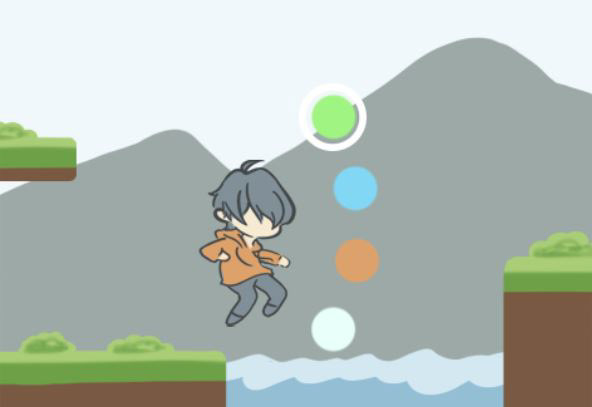
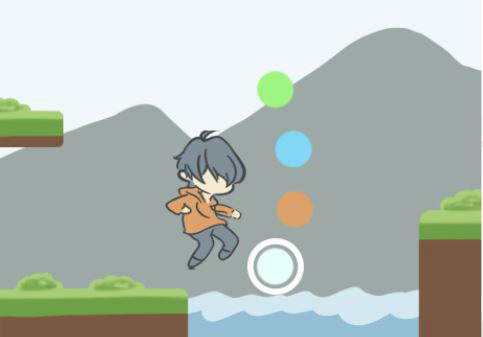
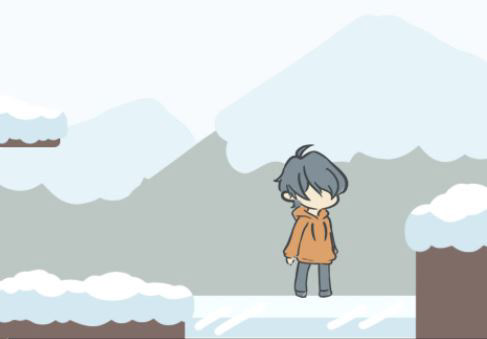
Project Overview
Solstice was a game created by my team during my game design course. Solstice is a puzzle platformer in which the main mechanic allows the player to switch the season. This impacts the terrain around them as shown in the early concept art below. The three images show the player switching from spring to winter which causes the water below them to freeze and create a platform. You can play our final game here: https://simmer.io/@llitt/solstice.
My Responsibilities
I had a couple of roles during the course of the project. Initially, I was functioning as the lead game designer. I played a big part in the development of the season-switching mechanic and lead discussions surrounding the multiple ideas that had been brought up by the rest of the team. As our prototype progressed I lead the playtesting efforts. I carried out playtests, carefully recorded the results, and produced write-ups to demonstrate what we had learned and how we could move forward to improve the game.
We wanted to develop iteratively and test our idea as we went. Our goal was to ensure that the main mechanic of the game was interesting to users and that the end result was something people would be excited to play. We first did "guerilla" testing and then later with observations of users playing our game.
Guerilla Testing
Our first round of testing occurred when the game was in its infancy. This process started immediately after the idea for Solstice was developed and this allowed the core concepts of the game to be tested. It is never too early to get feedback on your game because it allows changes to be made before time has been lost implementing unnecessary or unwanted features. Playtesters were shown our initial design document, storyboard, and the initial concept art our team created in the first couple of days of design. They were then asked a few simple questions to gather their feedback on what we had so far.
Playtesters were asked:
- What do you think about the core game mechanic of the game?
- What do you like most and least about the idea?
- Do you have any suggestions for improvement?
- What do you like most and least about the idea?
- Do you have any suggestions for improvement?
Key Takeaways:
- Liked the general concept of the game
- Quality background story and concept art
- Interested in our proposed mechanics and gameplay
- Not sure about level design
- Concerned about seasonal changes driving level design
- Unsure about how we plan to make seasonal differences interact with each other
- Quality background story and concept art
- Interested in our proposed mechanics and gameplay
- Not sure about level design
- Concerned about seasonal changes driving level design
- Unsure about how we plan to make seasonal differences interact with each other
Playtesting Round 1
For our first round of playtesting we had one completed level to show to the users. This would allow them to get a sense of what the game could have to offer. Using the playtesting form shown above we captured a variety of quantitative and qualitative data to allow us to interpret and make into actionable goals.
One specific metric we wanted to track was how well the game was catering towards people of all skill levels. We plotted the overall player experience vs the cumulative gameplay rating and saw that the more experienced players enjoyed our game much more than the less experienced player. Some level of this was expected, but we knew that there was some growth to be had there.
To uncover what was causing this trend we had to look into the qualitative data. We read through the user responses and took note of the most common issues players were having and what they enjoyed about the game.
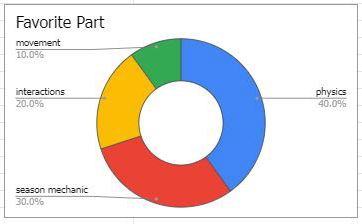
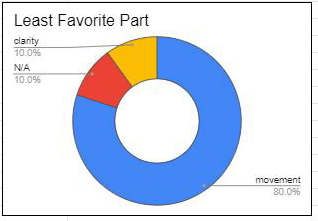
Key Takeaways:
- Players liked the seasonal mechanic and interactions between the seasons
- Players mainly struggled with movement
- Level design also needed a lot of work
- Platforms need to be more obvious
- Players mainly struggled with movement
- Level design also needed a lot of work
- Platforms need to be more obvious
What Changes to Make:
This feedback gave us everything that we could have hoped for. Given this feedback, there are three major changes we needed to make for our game. First, and most importantly, the player's movement and controls had to be fixed. Instead of using WASD to move and jump, and SPACEBAR to interact with objects in the scene, most testers noted that they’d rather jump using SPACEBAR and use another button to interact with the scene, such as E or F.
Secondly, the clarity between the foreground and the background needed to be improved. This was simply done by masking background assets with a semi-transparent white mask.
Lastly, playtesters agreed that the player’s sprite implies that the jump height should be higher than it is. These three changes should improve how our game caters to the more casual player, and also help players focus more on the puzzles in the game and less on the difficulty of the movement between platforms.
Playtesting Round 2
The two playtesting rounds were almost identical in execution. This time instead of only having one completed level we had our almost completed game. It had not been polished by any means, but most of the gameplay was there and ready to be tested by players. This feedback is slightly less important than the rest of the feedback just because it is happening so late in the development cycle, but it allowed us to focus on the things that were the most important to fix before the end of the project.
We were happy to see that the player experience had less impact on the gameplay rating and that in this round it actually favored people who had slightly less experience.
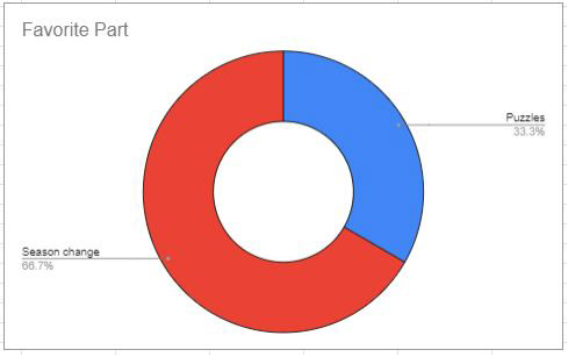
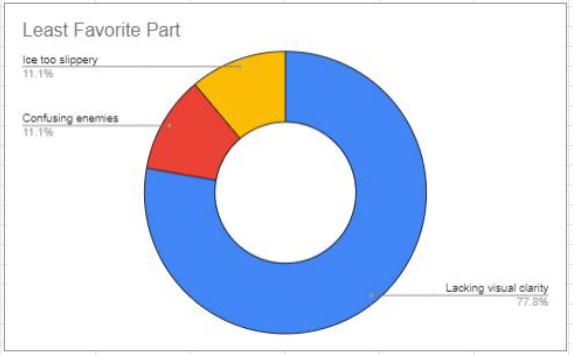
The key takeaways from this round of iteration were made very clear to us. In general, the game lacked a lot of clarity and that became obvious in the "Least Favorite Part" chart down above. Players consistently rated the clarity of the game to be fairly low and consistently said that that was their least favorite part of the game.
Moving forward this is something we hope to resolve by adding audio and visual cues to our game. The player will be able to use these clues to discern objects from each other as well as better understand the general flow of the game. These small changes, like footsteps, or collision sounds, would greatly help with the problems addressed by the users and are something that we can complete by the end of the quarter. Along with these changes, the enemies will likely become less confusing because they will be easier to identify.
The last concern we hope to address is the fine-tuning of the ice platforms. This can be done by tweaking a setting. These are all changes we would make if we carry on development for the game.
Game Demo